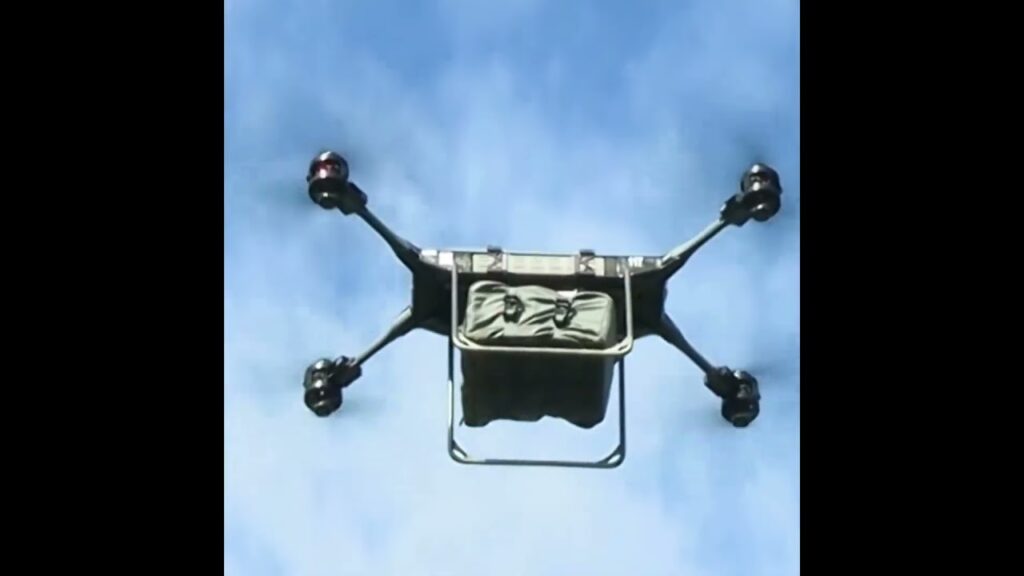The Unseen Threat: Small Drones Exposing Airbase Vulnerabilities
Recent headlines and online discussions are ablaze with the escalating challenge of drone intrusions at airbases. These aren’t just casual hobbyist flights gone astray; they represent a tangible shift in the threat landscape. Small Unmanned Aircraft Systems (sUAS), readily available and increasingly sophisticated, are probing the defenses of even the most secure military installations. The videos highlighted below offer a stark look at this evolving reality, examining everything from the methods being developed to counter these incursions to the very doctrine shaping the military’s response. This isn’t theoretical – it’s about live exercises, real-world sightings, and the urgent need to adapt our security protocols in the face of this nimble, aerial threat. Are our airbases truly ready for a sky filled with potential adversaries, no matter how small?
Key Insights from the Front Lines of Drone Defense
-
Multi-Layered Defense is Paramount (Video 1): The "Ultimate Simple Method" video showcases the U.S. military’s approach to drone interdiction isn’t about a single "magic bullet" solution. It’s a layered strategy. From basic marksmanship with M4 carbines and shotguns for close-range engagements, to more advanced systems like the M-LIDS 30mm chain gun for a harder punch, and directed energy weapons like DRONEBUSTER for electronic countermeasures, the message is clear: redundancy and adaptability are key. This visual display of diverse methods underscores the complexity of countering sUAS threats, requiring a toolkit that spans kinetic and non-kinetic options.
-
Mysterious Sightings Highlight Intelligence Gaps (Video 2): The report of "Mysterious Drone Sightings At U.S. Airbases In Britain" is less about overt action and more about the unsettling unknown. Unidentified drones operating around sensitive locations like RAF Lakenheath and Mildenhall, bases housing critical assets including B-52 bombers, raise serious questions. These aren’t just technical challenges; they point to potential intelligence gaps and the need for enhanced airspace awareness around critical infrastructure. The unidentified nature of these drones is particularly concerning, suggesting a deliberate probing of defenses, potentially by state or non-state actors with sophisticated capabilities. The mention of RAF Fairford, a new location for such sightings, indicates a broadening scope of potential vulnerabilities.
-
Tethered Drones: A Double-Edged Sword (Video 3): While "ProximaVision Aerospace Systems’ Walter Raps on the Advantages of Tethered Drones" focuses on commercial applications like live sports, it inadvertently highlights a critical security consideration. Tethered drones, with their extended endurance and reliable power, could be adapted for persistent surveillance around airbases. Imagine a seemingly innocuous news drone hovering for days, collecting intelligence. While the video pitches benefits like military-grade durability and remote operation, these very features could be exploited for nefarious purposes. This underscores the need to consider not just rogue hobby drones, but also the potential misuse of advanced commercial drone technology.
-
Understanding the Enemy: UAS Categorization is Foundational (Video 4): "ATP 3-01.81: Unmanned Aircraft Systems (UAS)" is crucial for establishing a common operational language. LTC Nate Rice’s explanation of UAS categories (Group 1 to Group 5) provides essential context for understanding the spectrum of threats. From micro and mini drones to strategic-level systems, the Army’s classification system highlights that not all drones are created equal. This doctrinal foundation is vital for developing appropriate countermeasures and risk assessments. Knowing the capabilities and limitations of different UAS groups informs effective defense strategies, moving beyond a generic "drone threat" perception.
-
Drones as Force Multipliers: The Battlefield Evolution (Video 5): "Small Drones Are Revolutionizing US Army Artillery Fire" demonstrates the tactical advantage sUAS provide. Using drones for target acquisition in artillery exercises at Fort Indiantown Gap showcases their battlefield effectiveness. This operational integration, while focused on offensive capabilities, has a direct bearing on airbase security. The same technologies revolutionizing artillery fire can be used to reconnoiter airbase defenses, identify vulnerabilities, and even potentially coordinate attacks. The video subtly reveals the dual-use nature of drone technology, highlighting its offensive and defensive implications for airbase security.
Adapting to the Aerial Domain: A New Security Paradigm
The insights gleaned from these videos paint a clear picture: the threat of small Unmanned Aircraft Systems to airbase security is not a hypothetical future scenario – it is an active and evolving challenge. We’re moving beyond the era of perimeter fences and manned patrols as primary defenses. The new security paradigm demands a proactive, technologically advanced, and multi-faceted approach. This includes robust detection and tracking systems capable of identifying small drone signatures, integrated counter-UAS technologies that can neutralize threats across various ranges and scenarios, and a deeper understanding of the operational environment, encompassing both friendly and potentially hostile drone activity. The integration of doctrine, as highlighted in the UAS categorization video, is equally crucial for establishing a common framework for response and resource allocation.
Eyes on the Sky: Dive Deeper into Drone Defense
Want to see these challenges and solutions in action? Scroll down to explore the full YouTube videos and witness firsthand the evolving landscape of airbase security in the age of drones. The future of airpower depends on our ability to secure the skies, both manned and unmanned.





